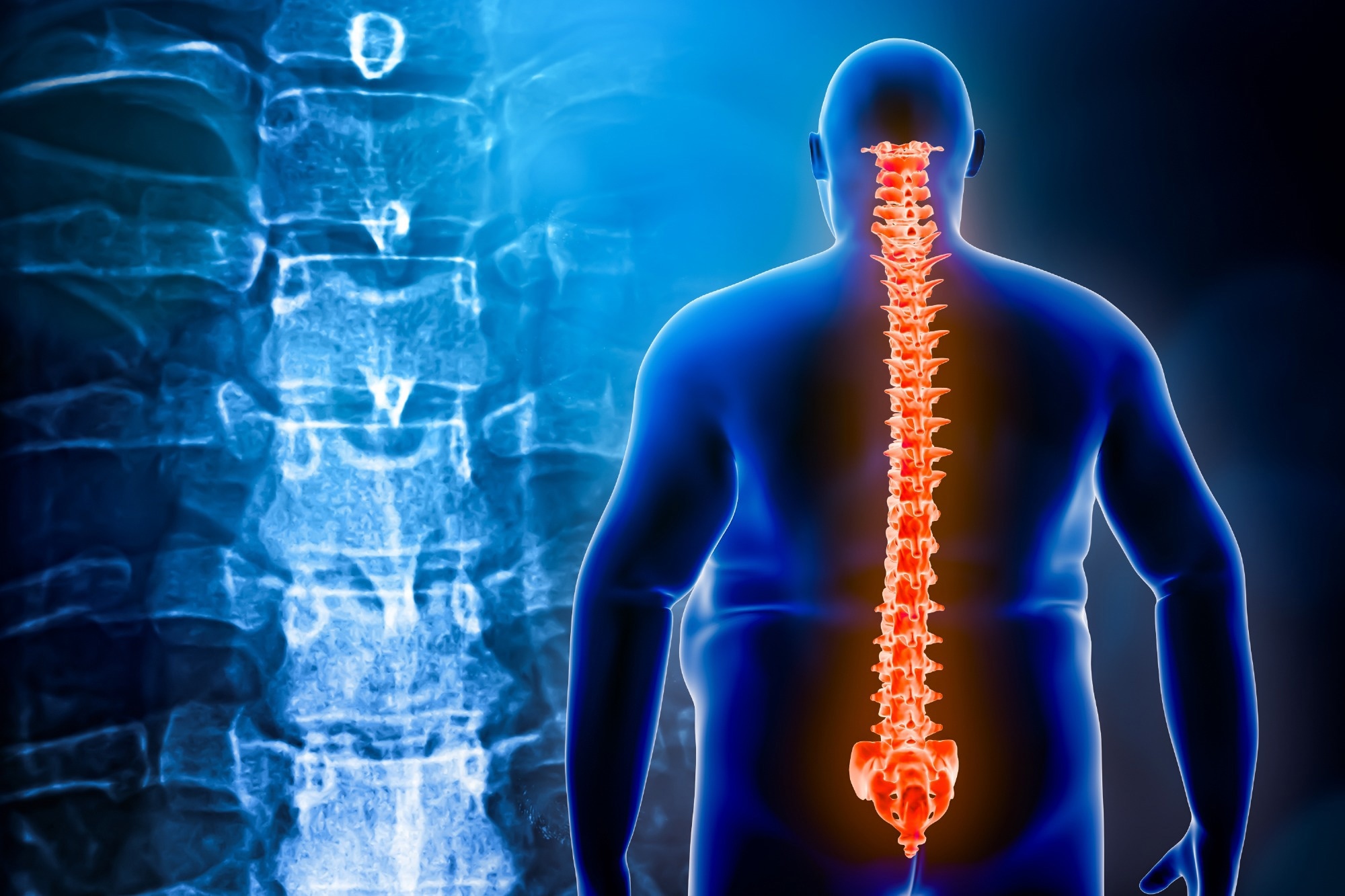New research reveals that excess abdominal fat, as measured by LAP, is a strong, non-linear predictor of reduced bone density in U.S. adults, especially in the spine, underscoring the hidden risks obesity poses to skeletal health.
 Study: The association between lipid accumulation products and bone mineral density in U.S. Adults, a nationally representative cross-sectional study. Image Credit: MattL_Images / Shutterstock.com
Study: The association between lipid accumulation products and bone mineral density in U.S. Adults, a nationally representative cross-sectional study. Image Credit: MattL_Images / Shutterstock.com
A recent study published in the journal Scientific Reports investigates the use of lipid accumulation products (LAP) as a predictor of osteoporosis.
The global health burden of osteoporosis
Osteoporosis, a primarily age-related disease, causes bones to become weak and brittle. Current estimates indicate that over 20% of individuals 50 years of age and older worldwide are living with osteoporosis, with women more likely to experience an osteoporosis-related fracture.
According to the International Osteoporosis Foundation, nearly 320 million people will be at risk of developing osteoporosis by 2040. The insufficient accumulation of bone mass during adolescence, combined with excessive bone loss during middle and old age, significantly increases the risk of developing osteoporosis.
LAP, which determines the accumulation of lipids and the presence of central obesity, is calculated using both waist circumference measurements and fasting triglyceride levels. High LAP values may predict an individual’s risk of developing diabetes, liver disease, osteoarthritis, and metabolic syndrome.
To date, few studies have investigated the relationship between LAP levels and bone mineral density (BMD), which motivated the researchers of the current study to examine the association between these two biomarkers among a cohort of adults residing in the United States.
Study findings
Data for the current analysis were obtained from the National Health and Nutrition Examination Survey (NHANES) between 2011 and 2018. The final analysis included 3,883 individuals, 54% of whom were men with an average age of 39.
People with higher LAP levels were more likely to be male, older, Mexican American or White, less educated, and to report drinking and smoking behavior. Body mass index (BMI) measurements and blood urea nitrogen and uric acid levels among these individuals were also higher.
Individuals with higher LAP values reported less healthy eating habits and were more likely to be deficient in vitamin D and phosphorus. Higher LAP was also associated with a greater risk of developing osteoporosis.
After adjusting for other confounding factors, BMD measurements in people with LAP levels in the fourth quartile were 11% lower than those in the first quartile. However, no correlation between BMD and LAP was observed until LAP levels exceeded 2.85; at this point, a negative correlation was observed. Lumbar BMD was 29% lower among individuals with LAP levels of 2.85 or greater, thus indicating a non-linear correlation.
These associations were independent of health conditions like hypertension or diabetes, BMI, smoking, drinking, and physical activity.
How obesity disrupts bone health
Potential mechanisms underlying the association between osteoporosis and obesity include altered bone structure due to the increased mechanical load induced by increased body weight.
Bone marrow mesenchymal stem cells (BMSCs) in obese people are more likely to differentiate into fat cells than bone-forming osteoblasts. In obesity, fat cells fill the bone marrow, thereby suppressing the further development of osteoblasts while also promoting inflammation, which increases the risk of bone resorption by osteoclasts.
Fat cell hypertrophy during obesity may also lead to systemic inflammation due to the release of chemicals like leptin. Insulin resistance may also arise, which accelerates metabolism within BMSCs.
These findings support the clinical utility of LAP as a predictor of osteoporosis and provide valuable insights into developing early intervention strategies for osteoporosis populations.”
Summary and future directions
A key strength of the current study is the inclusion of a nationally representative cohort of American adults. Here, higher LAP levels were associated with a significantly greater risk of lumbar spine osteoporosis, suggesting a non-linear correlation between these two conditions. These observations are in accordance with earlier studies reporting that obesity increases the risk of poor bone health and, as a result, fragility fractures.
Nevertheless, additional studies are needed to further explore the potential association that exists between LAP and femur BMD, as the current study did not have sufficient data to complete this analysis.
Journal reference:
- Cui, A., Zhuang, Y., Wei, X., et al. (2025). The association between lipid accumulation products and bone mineral density in U.S. Adults, a nationally representative cross-sectional study. Scientific Reports. doi:10.1038/s41598-025-00833-6.